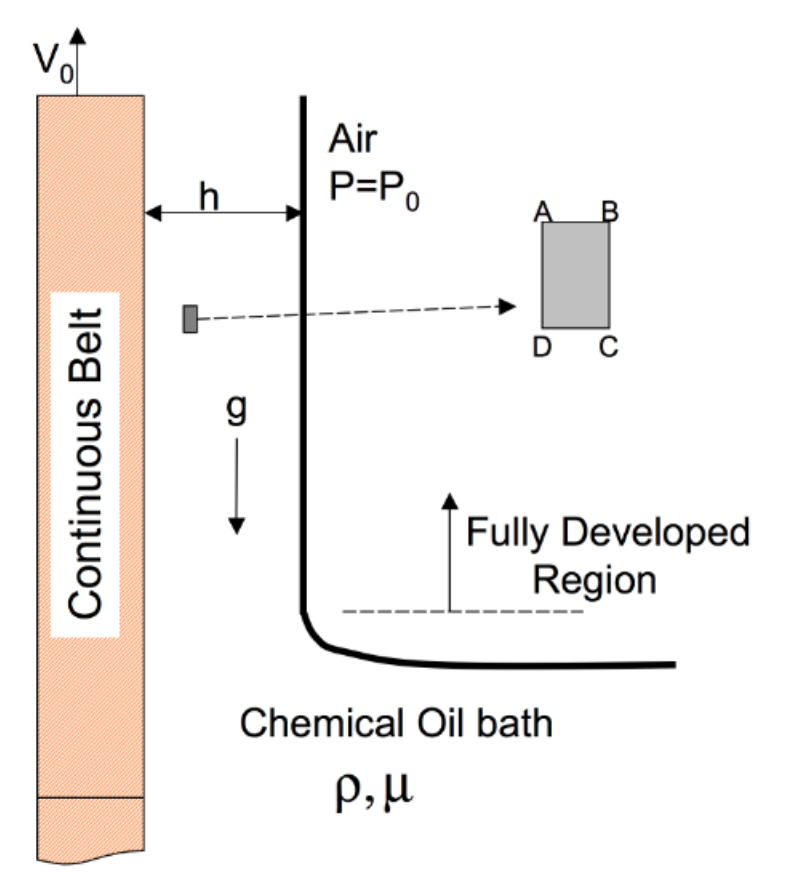Oil Coating: A long, continuous belt is pulled upwards through a chemical oil bath at velocity V0. The belt has rectangular cross-section and has length (L), width into the paper (W). The belt picks up a film of oil of thickness h, density ρ, and dynamic viscosity μ. Gravity g tends to make the oil drain down, but the movement of the belt keeps the fluid from running off completely. Assume fully developed, steady, laminar, incompressible and two-dimensional flow of oil to answer the following questions. Assume that no pressure gradient is needed in the vertical direction to drive the film flow. Also assume that the shear stress at the air-oil interface is zero (free shear condition). Assume no-slip condition for the fluid in contact with the moving belt. Justify any other assumptions you may make. Show all steps. (a) Derive an expression for the two-dimensional velocity field inside the oil film in terms of the known parameters. Clearly indicate your co-ordinates and origin. You must indicate which equations are used, which terms in your equations vanish (with proper justification), and what boundary conditions are applied. (b) Sketch the velocity profile in a non-dimensional form as v/V0 versus x/h. (c) Derive an expression for the volume flow rate of the oil film.
Oil Coating: A long, continuous belt is pulled upwards through a chemical oil bath at velocity V0. The belt has rectangular cross-section and has length (L), width into the paper (W). The belt picks up a film of oil of thickness h, density ρ, and dynamic viscosity μ. Gravity g tends to make the oil drain down, but the movement of the belt keeps the fluid from running off completely. Assume fully developed, steady, laminar, incompressible and two-dimensional flow of oil to answer the following questions. Assume that no pressure gradient is needed in the vertical direction to drive the film flow. Also assume that the shear stress at the air-oil interface is zero (free shear condition). Assume no-slip condition for the fluid in contact with the moving belt. Justify any other assumptions you may make. Show all steps.
(a) Derive an expression for the two-dimensional velocity field inside the oil film in terms of the known parameters. Clearly indicate your co-ordinates and origin. You must indicate which equations are used, which terms in your equations vanish (with proper justification), and what boundary conditions are applied.
(b) Sketch the velocity profile in a non-dimensional form as v/V0 versus x/h.
(c) Derive an expression for the volume flow rate of the oil film.
(d) Calculate the velocity (non-zero) of the belt (Vcritical) at which there is no net oil flow.
(e) Calculate the shear stress, if any, on surface AD of the fluid element ABCD inside the oil film. Indicate the direction of the stress and whether it is positive or negative.
(f) At some point X(x0,y0) inside the oil film, calculate an expression for the total acceleration (magnitude and direction).

Trending now
This is a popular solution!
Step by step
Solved in 7 steps with 2 images









